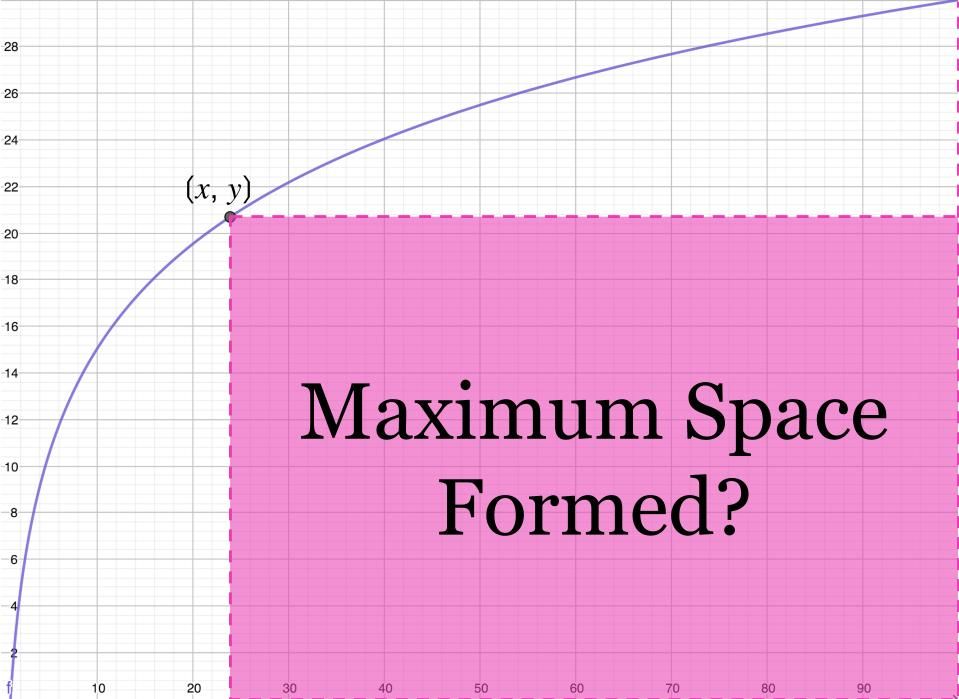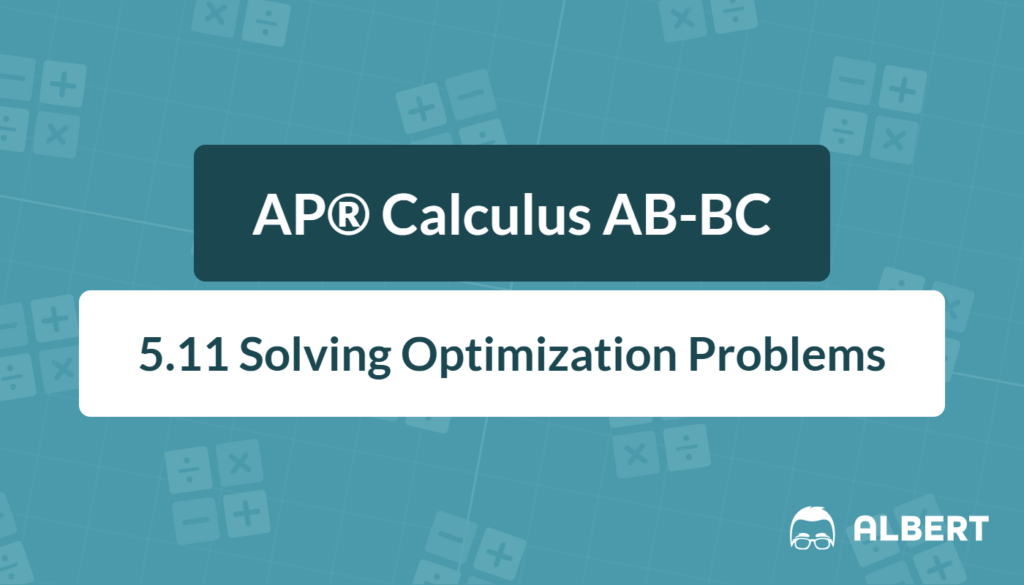Optimization questions appear frequently in AP® Calculus and involve finding maximum or minimum values based on certain conditions. These problems are important because they help predict the most efficient or least costly outcome in real-world contexts. When working with 5.11 solving optimization problems, students learn to apply differentiation to everyday situations, such as finding the smallest surface area for a box or maximizing the enclosed area of a fence. Consequently, mastering optimization opens doors to more advanced calculus applications and supports deeper problem-solving skills.
What We Review
Key Concepts: What Is Optimization?
Definition of Optimization
Optimization is the process of finding the best possible outcome, such as a highest or lowest value, under specific constraints. In calculus, this involves using derivatives to locate maximum or minimum points of a function.
How Optimization Connects to Maximum and Minimum Values
A function’s maximum or minimum typically occurs at points where its derivative is zero or undefined. These special values are called critical points. However, it is also important to check boundary values or endpoints because an extreme value could happen there as well.
Understanding the Objective Function and Constraints
- The objective function is the expression that needs to be optimized. For example, an area A, volume V, or cost C.
- Constraints are equations or inequalities that limit possible solutions, such as a fixed perimeter or volume requirement.
Steps to Solve Optimization Problems
Identify the Quantity to Optimize
- Determine whether the goal is to maximize or minimize.
- Pay attention to the real-world context, which might involve dimensions, capacities, or costs.
- Sometimes it helps to create a visual based on the problem. The example below shows a visual for maximizing the space formed for a rectangle placed under a curve and touching the curve at a given point (x,y) .

Write an Equation for the Objective Function
- Express the quantity that needs to be optimized in mathematical form, for example A = lw for a rectangle’s area.
- Decide which variables are dependent or independent.
Use the Constraint to Reduce the Number of Variables
- From the problem statement, extract any conditions that limit or relate the variables.
- Rewrite one variable in terms of another to ensure the objective function has only one independent variable.
Differentiate the Objective Function
- Use differentiation rules (product rule, chain rule, etc.) to find \frac{d}{dx} of the objective function.
- The derivative will help locate critical points where \frac{d}{dx} = 0 or where no derivative exists.
Find Critical Points and Determine Maxima or Minima
- Solve for the values of x that make the derivative equal to zero.
- Use tests, such as the second derivative \frac{d^2}{dx^2} or a sign chart, to see whether each critical point corresponds to a maximum or a minimum.
Check the Endpoints or Boundaries
- Evaluate the objective function at boundary points or domain limits.
- Compare these values with values at critical points to confirm the absolute maximum or minimum in a real-world scenario.
Example: Optimizing Rectangular Area
Problem Statement
A farmer has 400 feet of fencing and wants to enclose a rectangular area. What dimensions maximize the area?
Step-by-Step Solution
- Identify Variables
- Let l represent the length of the rectangle and w represent the width.
- Write the Objective Function
- The area is A = l \times w.
- Incorporate the Constraint
- The perimeter is 400 feet, so 2l + 2w = 400. Solve for one variable, for example w = 200 - l.
- Express the Objective Function in One Variable
- Substitute w = 200 - l into A = l \times w: A(l) = l (200 - l) = 200l - l^2.
- Differentiate and Solve for Critical Points
- \frac{dA}{dl} = 200 - 2l.
- Set \frac{dA}{dl} = 0 to find 200 - 2l = 0 \Rightarrow l = 100.
- Verify Maximum or Minimum
- The second derivative is \frac{d^2A}{dl^2} = -2, which is negative, indicating a maximum.
- Conclude the Answer in Context
- When l = 100, then w = 200 - 100 = 100. The rectangle is actually a square with side length 100 feet, maximizing the area.
Common Pitfalls and Helpful Tips
- Always check endpoints if they exist in the domain.
- Observe all constraints, especially if there are multiple limiting conditions.
- Use the second derivative or a sign chart to confirm whether a critical point is maximum or minimum.
- Provide context at the end by including real-world interpretations of results.
Quick Reference Chart
| Term | Definition or Key Feature |
| Objective Function | The function that needs to be optimized (maximized or minimized). |
| Constraint | A condition that limits the possible values of the variables. |
| Critical Point | A point where the derivative is zero or undefined. |
| Derivative | The rate of change of a function with respect to its variable. |
Conclusion
In summary, 5.11 solving optimization problems covers the essential methods of using derivatives to find the best possible outcome in a given situation. After identifying the relevant variables, the objective function, and constraints, the derivative highlights the critical points that indicate maxima or minima. Then, checking boundary values and interpreting the result in context completes the process. By practicing more optimization practice problems, students gain confidence and see how these techniques extend to broader calculus applications in science, economics, and engineering.
Sharpen Your Skills for AP® Calculus AB-BC
Are you preparing for the AP® Calculus exam? We’ve got you covered! Try our review articles designed to help you confidently tackle real-world math problems. You’ll find everything you need to succeed, from quick tips to detailed strategies. Start exploring now!
Need help preparing for your AP® Calculus AB-BC exam?
Albert has hundreds of AP® Calculus AB-BC practice questions, free responses, and an AP® Calculus AB-BC practice test to try out.








